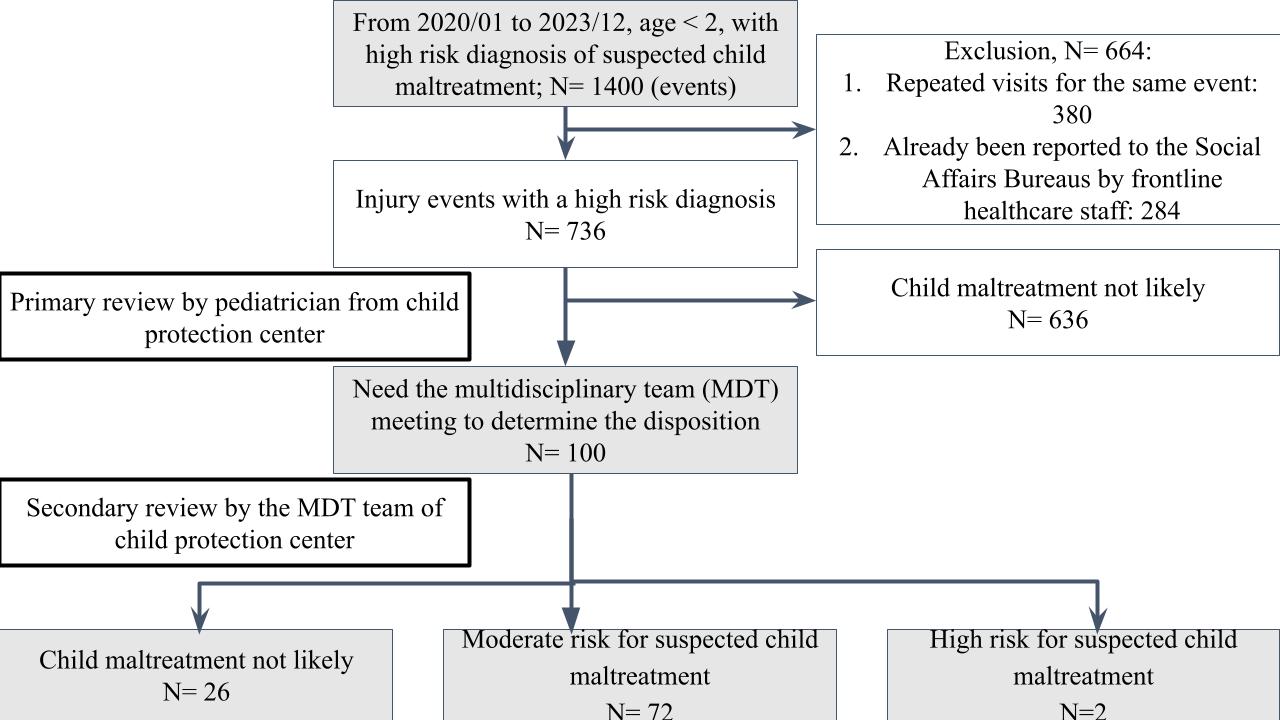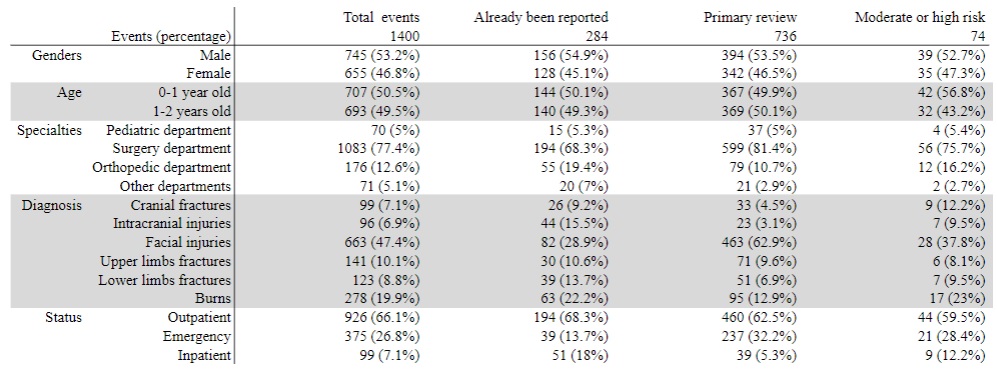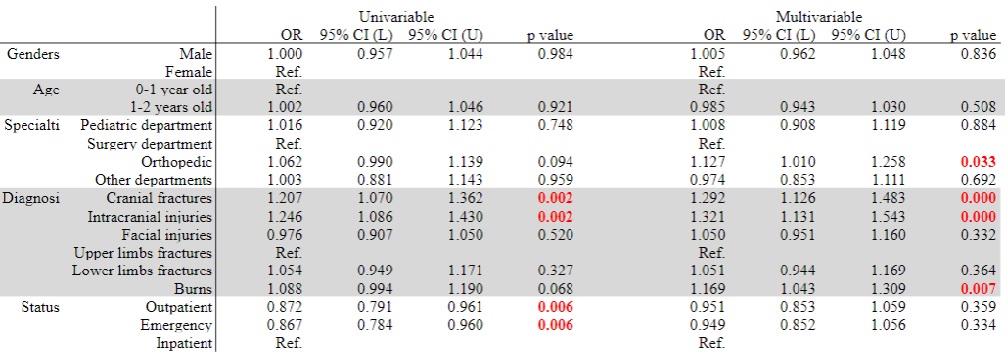Child Abuse & Neglect 2
Session: Child Abuse & Neglect 2
358 - Improving Child Protection: A Two-Stage Approach to Identifying Maltreatment Risks in Infants with Injuries
Sunday, April 27, 2025
8:30am - 10:45am HST
Publication Number: 358.5498
Yu-Cun Lin, National Taiwan University Hospital, New Taipei City, New Taipei, Taiwan (Republic of China); Meng-Chang Lee, National Taiwan University Hospital, Taipei, Taipei, Taiwan (Republic of China); Jhong-Lin Wu, National Taiwan University Hospital, Taipei, Taipei, Taiwan (Republic of China); Hsin-Ming Liu, National Taiwan university children hospital, Taipei, Taipei, Taiwan (Republic of China); Wei-Chieh Tseng, National taiwan university children's hospital, Taipei, Taipei, Taiwan (Republic of China); Wei-Hsuan Chang, National Taiwan University Hospital Jin-Shan Branch, Taipei city, Taipei, Taiwan (Republic of China)

Yu-Cun Lin, MD (he/him/his)
Fellows
National Taiwan University Hospital
New Taipei City, New Taipei, Taiwan (Republic of China)
Presenting Author(s)
Background: Early detection of maltreated children is essential to prevent tragic outcomes. However, missed or delayed diagnosis is not uncommon in clinical settings.
Objective: This study aims to evaluate the feasibility of identifying maltreated children through a two-stage retrospective review process, and to explore risks associated with maltreatment in children with injury-related diagnosis.
Design/Methods: From January 2020 to December 2023, children under the age of 2 years, visiting our hospital with high-risk injury-related diagnoses, including head injuries, fractures, and burns, were included. Medical records were reviewed through a two-staged process. Primary review was performed by a pediatrician and the child protection center held regular monthly multidisciplinary team (MDT) meetings, composed of physicians, social workers, and clinical psychologists, for secondary assessment. The events were categorized into: not likely, moderate- or high- risk for suspected child maltreatment. Multivariable regression analyses were performed to identify risk factors for moderate- and high-risk events.
Results: A total of 1400 injury events were included during the study period. Repeated visits for the same events and events reported to the Social Affairs Bureaus by frontline healthcare staff were excluded. There were 736 events that underwent the two-stage review process. Through primary review, 636 (86.4%) was categorized as not likely related to child maltreatment. One hundred events (13.6%) were reviewed in the MDT meetings. Among them, 72 (9.8%) were moderate-risk requiring follow-up and evaluation; 2 (0.3%) were high-risk and were reported to Social Affairs Bureaus after meetings. Multivariable regression analysis showed that visits to the orthopedics department [OR 1.13, 95% CI: 1.01-1.26, p=0.03], and cranial fractures (OR 1.29, 95% CI: 1.13-1.48, p < 0.01), intracranial injuries (OR 1.32, 95% CI: 1.13-1.54, p < 0.01), and burns (OR 1.17, 95% CI: 1.04-1.31, p < 0.01) were associated with moderate- or high- risk for suspected child maltreatment.
Conclusion(s): Our study suggests that through the two-staged retrospective case review process, injury events with increased risk of maltreatment could be identified effectively. In such a population, visits to the orthopedics department, diagnosis of cranial fractures, intracranial injuries, and burns, were associated with higher risk of suspected child maltreatment. These findings are important for healthcare staff to prevent missed diagnosis of maltreatment and to provide timely intervention for child protection in the clinical practice.
Algorithm to identify the risks for suspected child maltreatment.
 Medical records were reviewed through a two-staged process. Primary review was performed by a pediatrician. The child protection center held regular monthly multidisciplinary team (MDT) meetings, composed of physicians, social workers, and clinical psychologists, for secondary review. The events were categorized into: not likely, moderate- or high- risk for suspected child maltreatment.
Medical records were reviewed through a two-staged process. Primary review was performed by a pediatrician. The child protection center held regular monthly multidisciplinary team (MDT) meetings, composed of physicians, social workers, and clinical psychologists, for secondary review. The events were categorized into: not likely, moderate- or high- risk for suspected child maltreatment. Demographic characteristics of children under the age of 2 years, visiting our hospital with high-risk injury-related diagnoses.
 Events would be divided into several subgroups: total events, events have already been reported to the Social Affairs Bureaus, events involved into primary survey, and events with moderate- or high- risk for suspected child maltreatment.
Events would be divided into several subgroups: total events, events have already been reported to the Social Affairs Bureaus, events involved into primary survey, and events with moderate- or high- risk for suspected child maltreatment.To identify risk factors for moderate- and high-risk events via univariable and multivariable regression analyses.


